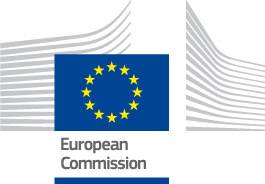Scandinavian-Mediterranean European Transport Corridor session at the Connecting Europe Days 2024 in Brussels

date: 05/04/2024
Pat Cox presented key messages from the recent European Coordinators’ Position Paper titled „CONNECTING EUROPE - A transport financing that is adapted to the challenges ahead“. The paper is presented by all eleven TEN-T Coordinators to share their experiences, express their views on the challenges for EU transport infrastructure policy and to provide a set of recommendations on workable solutions for ensuring effective funding for the EU transport infrastructure network. The purpose of that report is to provide further guidance to EU Institutions and to Member States at this crucial moment for the completion of the TEN-T and while a new European Parliament and Commission take their place in 2024. The aim is to identify key needs and challenges and propose recommendations to augment overall investment in transport infrastructure, to contribute to preparations for the new Multiannual Financial Framework (MFF) as well as to highlight the significance of funding transport infrastructure and its EU added value.
Main changes in the revised TEN-T Regulation were introduced by Martin Zeitler, Advisor to the European Coordinator. He recapitulated the milestones in the TEN-T revision process since December 2021 which culminated in the new Regulation entering into force in May 2024. This Regulation aims to address new political and societal challenges, to raise the network benefits and improve the integration and functioning of the urban and transport nodes, reinforce the infrastructure quality requirements for better services and to strengthen the governance of TEN-T. The revised network is therefore made of core, extended core and comprehensive parts which are to be completed in three steps (2030, 2040 and 2050 respectively). The integration of former Rail Freight and TEN-T Corridors brough the new European Transport Corridors (ETC) which will get a strengthened governance structure and reinforced infrastructure standards. The number of urban nodes has significantly increased. Urban nodes are required to adopt sustainable urban mobility plans and to develop their multimodal passenger and freight hubs.
Klaus-Uwe Sondermann, lead consultant of the Scandinavian-Mediterranean Corridor Studies, introduced the main geographical modifications resulting from the revised TEN-T Regulation which are to add the Finish “East Link” Lentorata – Porvoo – Kouvola fast rail connection, the direct (Stockholm –) Hallsberg – Oslo rail connection, the urban node of Frankfurt am Main to the corridor, the Pisa – Rome coast line for freight and the Messina bridge. Besides, he outlined the process of stakeholder involvement in the current study phase.
Speakers and discussion panellists involved representatives of the ETC Scan-Med Member States (MS): Finland (Mrs. Marjukka Vihavainen-Pitkanen), Sweden (Mr. Siamak Jalali), Norway (Mr. Paal Iversen), Denmark (Mr. Kristoffer Bang Refberg), Germany (Mrs. Stefanie Schröder), Austria (Mr. Claudius Popescu), Italy (Mrs. Federica Polce), and Malta (Mr. David Sutton). They highlighted the major issues relevant to the respective country and the corridor at which geopolitical developments, lowering of transport emissions and upgrading corridor infrastructure have been focused.
